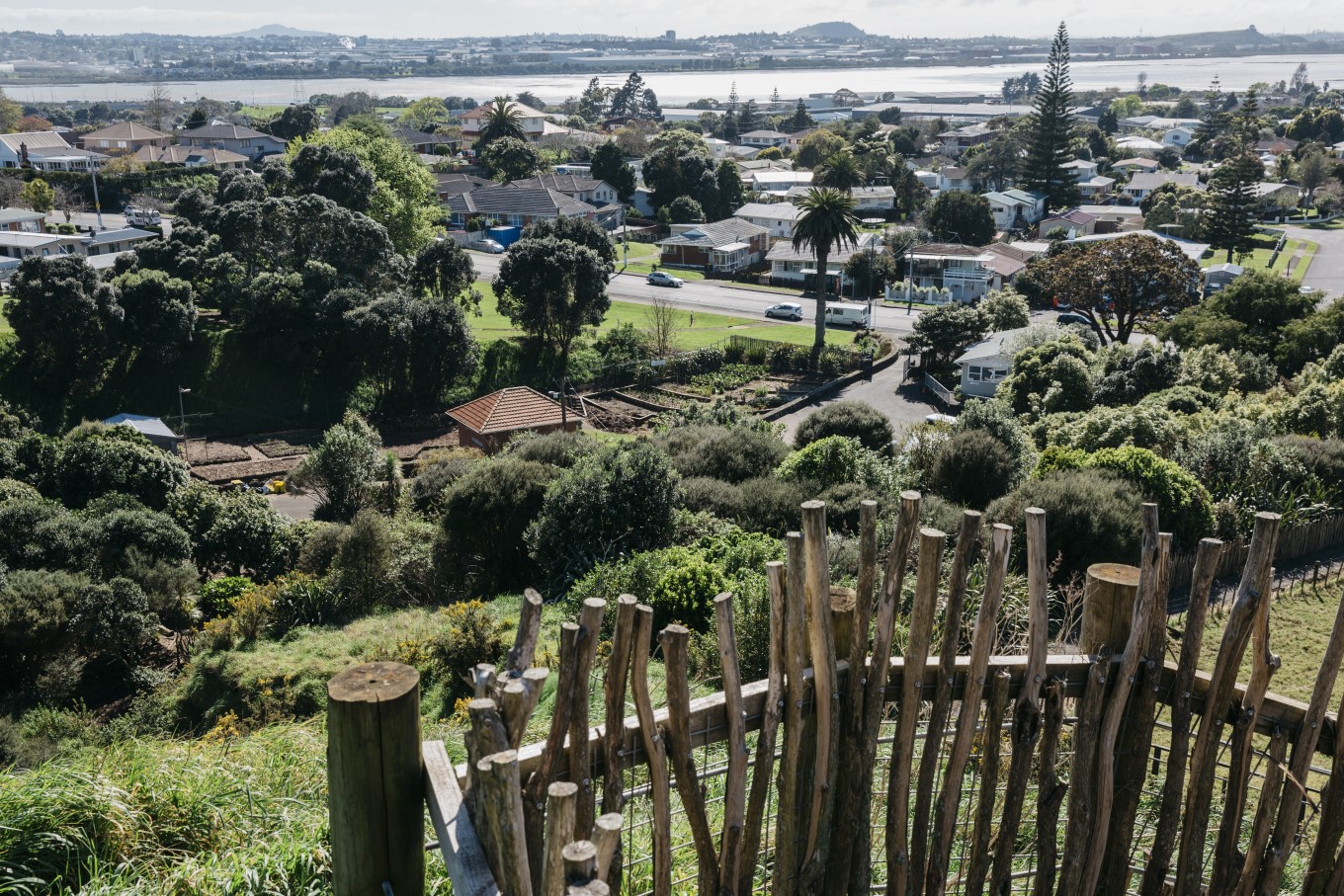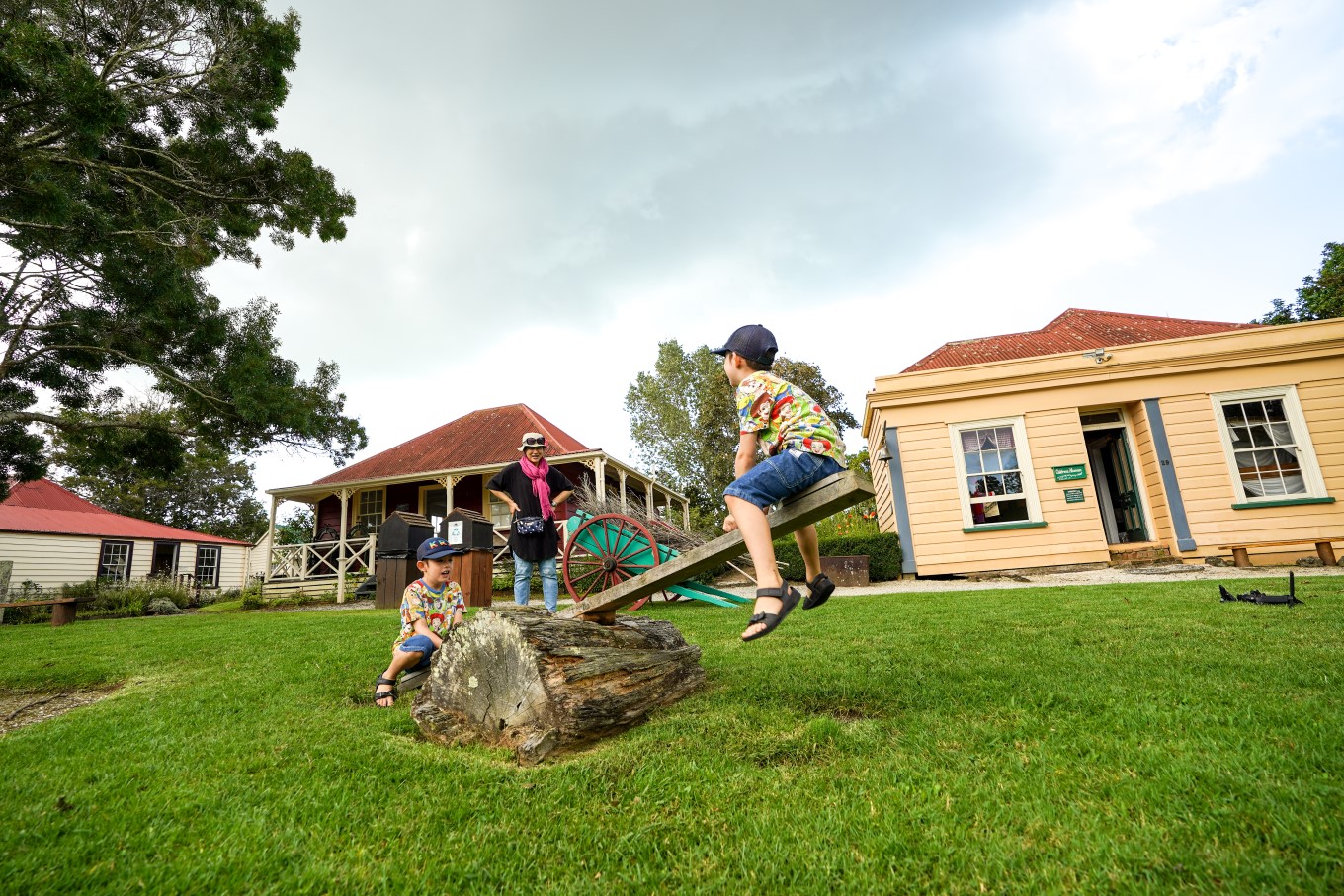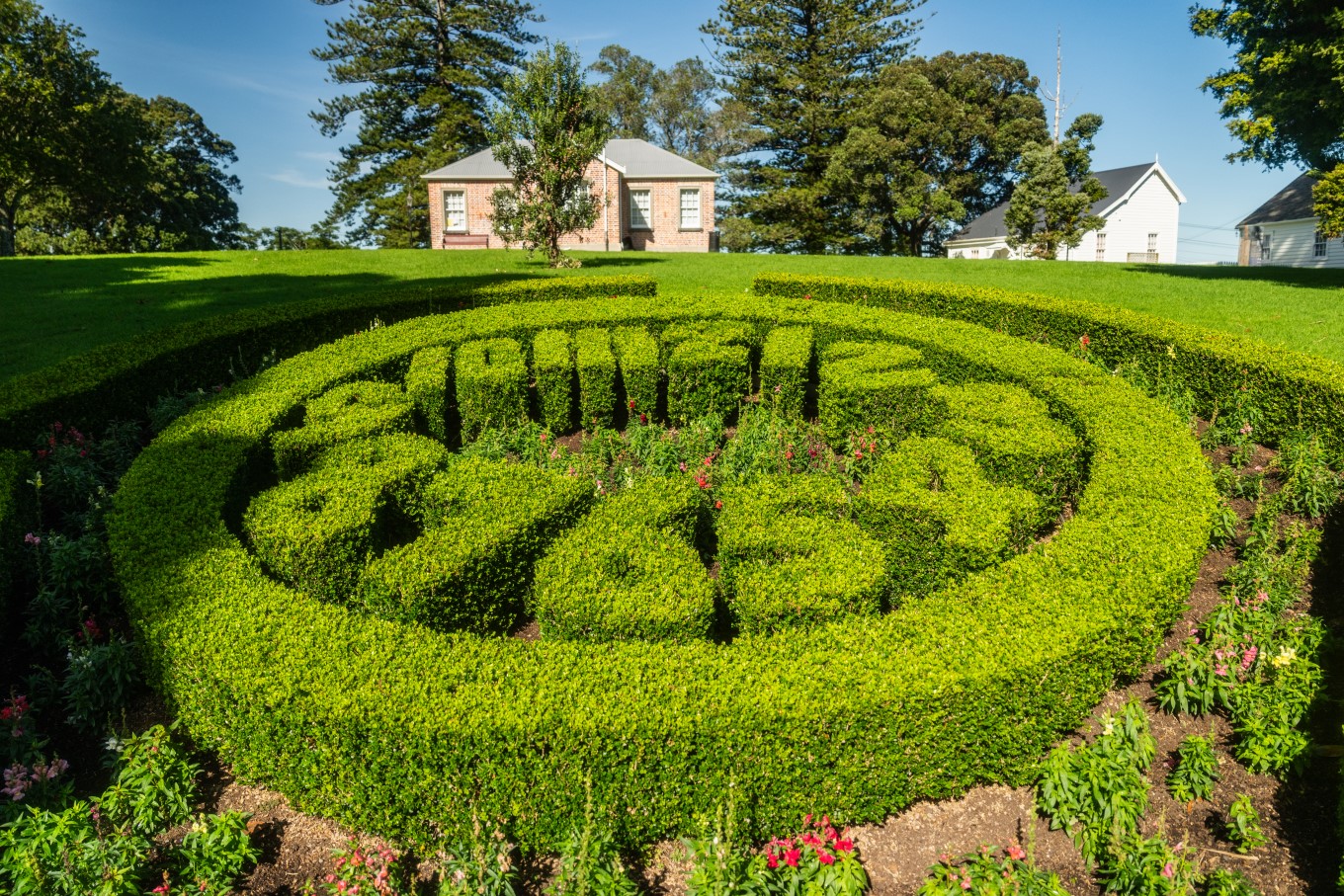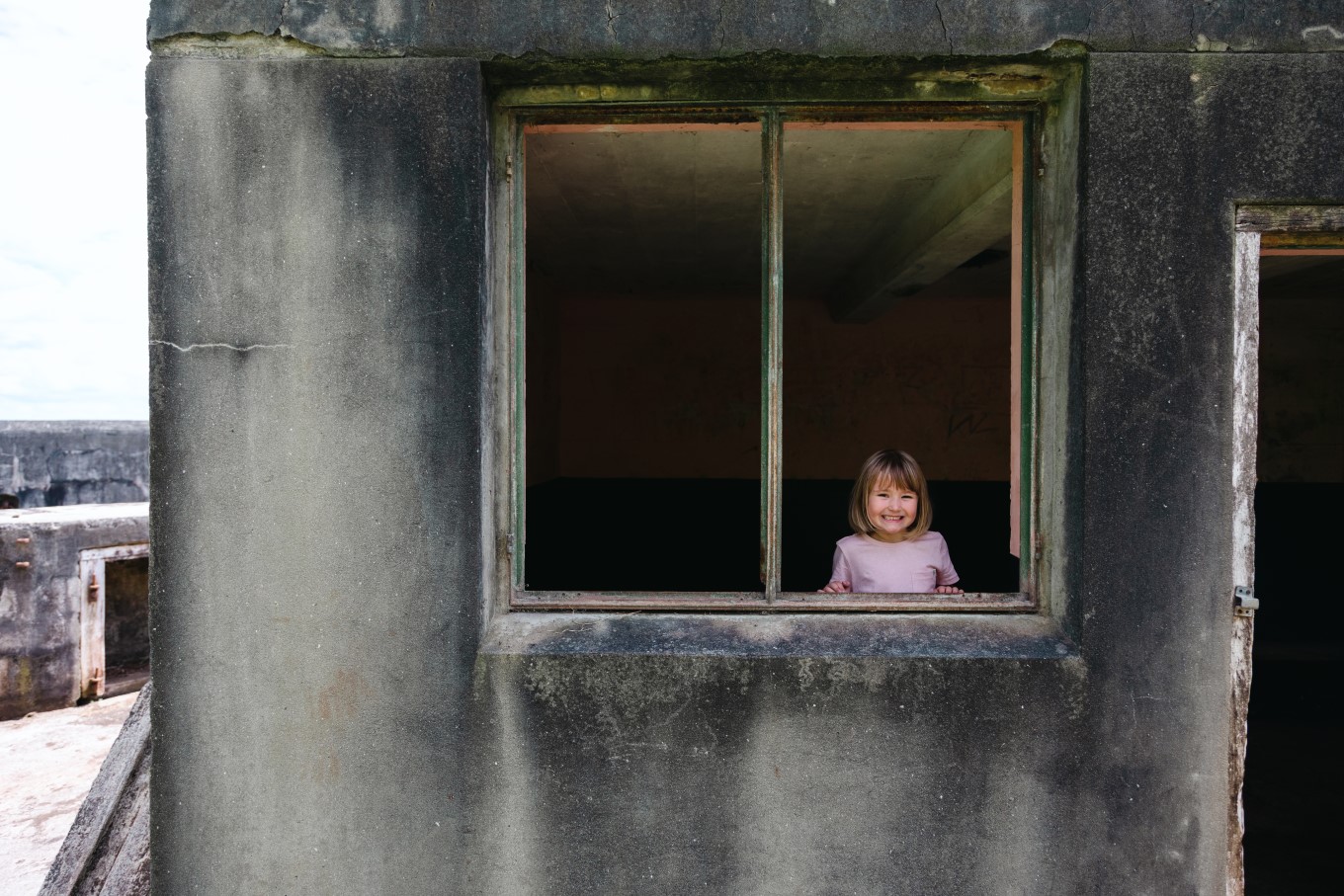Auckland is a constantly evolving, modern, cosmopolitan city with a vibrant culture that’s firmly rooted in history.
While there are plenty of new and innovative things to enjoy in Tāmaki Makaurau, there is also a fascinating history to explore. Here are five heritage sites in Auckland that history lovers will enjoy.
Learn more about the life of pre-European Māori at Māngere Mountain Education Centre
With its three harbours, fertile lands and tūpuna maunga (ancestral mountains), Tāmaki Makaurau is an essential region to many mana whenua groups. Tāmaki Makaurau is the Māori name for the Auckland region, meaning 'Tāmaki desired by many', a gathering place for many waka. The Māngere Mountain Education Centre Te Pane o Mataoho offers insight into Māori life before European contact.
Te Pane o Mataoho / Te Ara Pueru / Māngere Mountain is situated on the northern edge of Manukau Harbour, and has been a settlement site for 800 years. The volcanic cone bears the grooves and trenches of gardens, food storage pits, and trenches and boundaries of the fortified defensive pa. The education centre offers guided walks to allow visitors to hear the stories of the first people who arrived on the maunga from the descendants of iwi connected to this area.
There are also traditional gardens to visit to learn about mahinga māra (cultivation), and a whānau ātea (family recreation space) at the foot of the mountain, which includes a field for the traditional Māori game kī-o-rahi.

Travel back to the 1840s at Howick Historical Village
Howick Historical Village is a living museum that allows visitors to experience what life was like in an early colonial settlement in Tāmaki Makaurau. The Howick area in East Auckland was the largest settlement – three companies from the Royal New Zealand Fencibles were stationed there in 1847 to defend European settlers from Māori attack. The Fencibles were retired soldiers who had served in the British army in other wars and enlisted to serve in New Zealand for seven years in exchange for a cottage and an acre of land. To qualify for the Fencible scheme, the soldiers needed to be under 48 years of age and have “good character and industrious habits”.
There are several Fencible cottages at Howick Historical Village that you can explore – including those in which Private John Briody and Private Edward McDaniel and their families – and experience the cramped living quarters in which these early settlers bathed in barrels and ate pūkeko to survive.

Explore Auckland in the 1860s in Onehunga
In Auckland’s early history, Manukau Harbour was an important trade port, and the suburb of Onehunga is one of the oldest settlements. Jellicoe Park is an important landmark on the hillside overlooking the harbour – it was initially believed to have been a kūmara field for Māori, but later became a military camp for Fencible soldiers to defend Auckland from attack.
Construction of the brick Onehunga Blockhouse building began in 1856 under the order of Governor Gore Browne, who feared a wooden building could be burned down in an attack. The Blockhouse was given to the 2nd Battalion of the Auckland Militia on 6 December 1860, and the surrounding camp housed 277 soldiers.
Next to the Blockhouse is Laishley House, which was built in 1860 and is one of the oldest homes in Onehunga. Built from kauri timber with tōtara foundations, the house was formerly the home of Reverend Richard Laishley, the first Congregationalist minister to Onehunga.
Laishley House was built by John Rout at 44 Princes Street, and was moved to its current location in Jellicoe Park in 1984 by the Onehunga Borough Council to protect the area’s history. It sits alongside Journey’s End, a replica Fencible cottage built by Lieutenant-Colonel Soar and his wife in 1959.
Onehunga’s military connection continued into the 20th Century. It was an important area for the war effort during World Wars I and II, with Onehunga Woollen Mills on Neilson Street manufacturing fabric to be used for soldier’s uniforms. Jellicoe Park is also a war memorial to soldiers of the First World War, with an arch of remembrance built in 1929, and later, when the swimming pool was built in 1956, a plaque was erected to remember those that had fallen in both world wars.
Jellicoe Park has had several names in its European history, including Green Hill and Blockhouse Reserve, but it was renamed Jellicoe Park after Governor-General Viscount Jellicoe in 1921. The buildings in the are open to the public on the first and third Sunday of each month from 1.30-4pm.

The Onehunga Blockhouse, Laishley House and Fencible cottage Journey’s End in Jellicoe Park – seen here behind the flower clock – are open to the public on the first and third Sunday of each month.
Take a tour of a grand Victorian home built in the 1870s at Pah Homestead
Known initially as Koheranui, Monte Cecilia Park was an important area to Ngai Riukiuta, descendants of the Tainui canoe, and Pōtatau Te Wherowhero, who would become the first Māori King, is believed to have settled in the area between 1839 and 1844.
The 162ha estate in Royal Oak was purchased from Māori in the 1840s by land dealer William Hart, and the farmland had several owners until James Williamson (who bought it in the late 1870s) built the Italianate-style Pah Homestead building. The property later became home to St John’s Collegiate School for boys in 1901, and in 1913 was purchased by the Order of the Sisters of Mercy and the Roman Catholic Bishop of Auckland, when it was renamed Monte Cecilia and became an orphanage for girls, before becoming a boarding school for boys again in 1925. In 1965, the home became a training centre for the Mercy Order and Catholic Diocese.
In the early 2000s, the building was in a state of disrepair when it was purchased by Auckland Council, and was restored with the support of TSB Bank and the Wallace Arts Trust. Today, Pah Homestead is run by The Arts House Trust. It is an art gallery that boasts a collection of nearly 10,000 contemporary New Zealand artworks, including sculptures in the gardens and a cafe with views from the verandah towards Maungakiekie / One Tree Hill. The park grounds include many historic trees and an off-leash area for dogs..
Get tunnel vision at an 1880s military base in Maungauika / North Head
More than a century before the Cold War, New Zealand was in the grips of a ‘Russian scare’. In the aftermath of the Crimean War of the 1850s, Russia’s naval presence in the Pacific was perceived as a considerable threat to the British colonies, including New Zealand. The fear reached feverish levels on 17 February 1873 when the Daily Southern Cross published a hoax article reporting that a Russian warship called Kaskowiski (‘cask of whisky’) had entered Waitematā Harbour, seized gold and taken Auckland’s mayor Philip Philips hostage. The article – which was published with an asterisk in the headline and future date for all events – was intended to highlight Auckland's lack of preparation for a Russian attack. Still, many frightened Aucklanders failed to see the joke.
Russian conflict in Afghanistan in 1885 heightened the Russian scare, and the gun batteries at Maungauika / North Head in Devonport were built as a strategic defence fort, which was expanded until the end of World War II. Visitors can explore the tunnels and see the military installations, including cannons on the Maungauika / North Head Path, and dive further into the area’s wartime history at Torpedo Bay Navy Museum, located at the base of the maunga.



